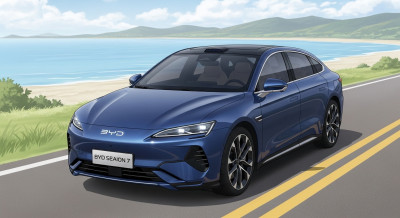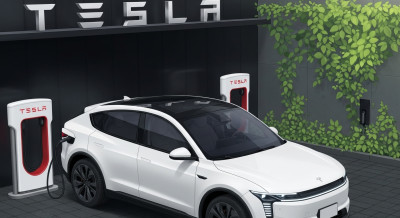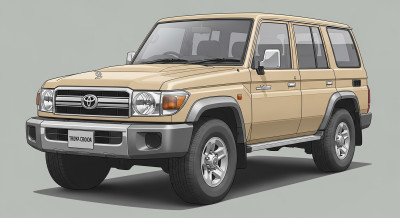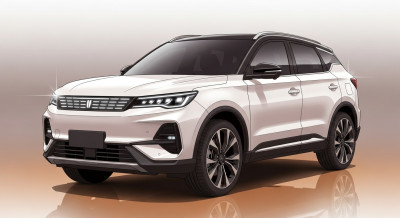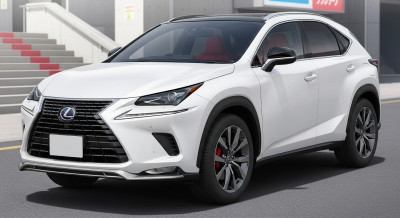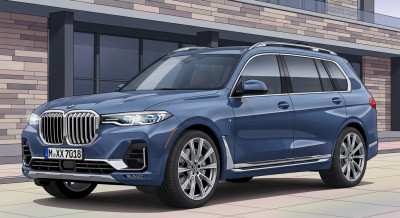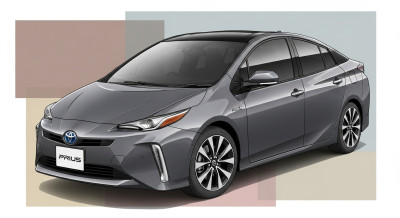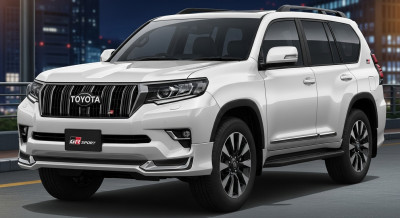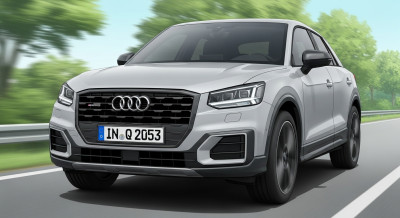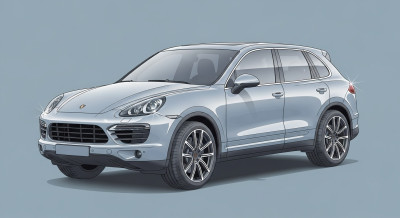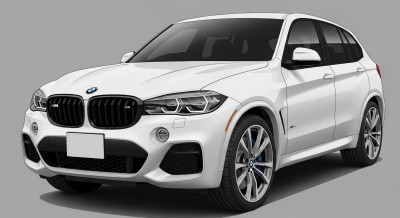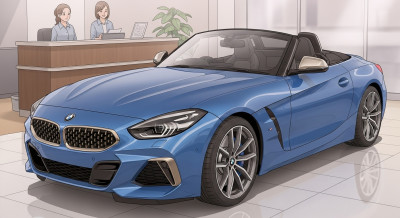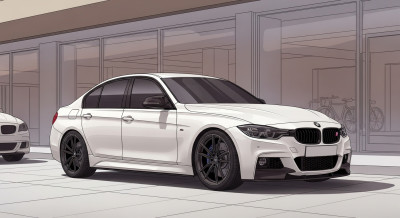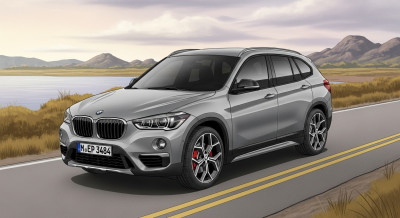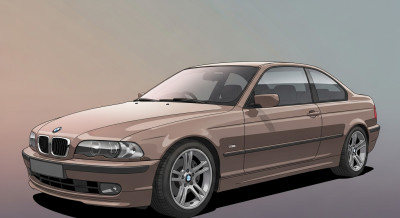2020 Chevrolet Camaro | Review & Road Test
For the latest Chevrolet Camaro pricing and information:
https://www.kbb.com/chevrolet/camaro/
The Camaro’s interior feels inspired by its racing heritage. Great bucket seats really plant the driver and passenger upfront. These are very comfortable, incidentally and I fit in here really nicely.
There’s a genuine cockpit feel to this interior, meaning it feels a bit claustrophobic in here. Perhaps that’s a byproduct of the tiny windows and low roof. Though there is plenty of leg and headroom in the front. If you shuttle passengers a lot, I’d recommend looking at the Challenger instead.
Chrome and modern elements mix in with a nod to the Camaro’s heritage in places like the air vents and the hooded instrument cluster. Unfortunately, there’s quite a bit of plastic, too. A 7-inch touchscreen with Chevrolet’s Infotainment 3 system, Apple CarPlay and Android Auto standard, but that’s upgradable to an 8-inch on the LT trim and above.
There’s the standard 2.0-liter turbocharged 4-cylinder in the LS or LT, (275 hp and 295 lb-ft torque) The 3.6-liter V6 (335 hp 283 lb-ft torque) that you can get in the LT doesn’t get you as much torque but offers cylinder deactivation for better fuel economy.
The Camaro’s muscle enters the picture with a 6.2-liter V8 that’s shared with the Corvette (455 hp 455 lb-ft torque). That’s available on the newest LT1 trim and the SS. And then there’s the grand poobah with the supercharged Camaro ZL1 that delivers 650 horses and 650 lb-ft of torque. That makes the hair on the back of your neck stand up.
All engines connect to a 6-speed manual that includes automatic rev-matching on V8 models, but you can upgrade to an 8-speed automatic transmission and a 10-speed auto on the V6 and V8 models.
While I’m disappointed not to have the manual, this 10-speed transmission really is a charmer. It coaxes all the power out of this V6 really efficiently, and if I want to manipulate that power to my will, I’ve got paddle shifters here to do that.
There’s confidence in every element in this car. The steering feels world-class with perfect weight, and it translates driver inputs expeditiously.
The chassis is lightweight and nimble, and it feels balanced and solid through turns. Its suspension feels sporty without feeling punishing on your commute even in Sporty mode. The throttle feels eager and the exhaust amplifies a good sound, even from this V6.
The only serious shortcoming here is visibility. Certainly, the competition from Ford and Dodge win in this category. But if you need to see more, you can always get the Camaro in a convertible option.
If hitting the track excites you, then the 1LE track package ($7,500) adds a performance extras.
Without overstating it, pricing on the Camaro feels like you’re getting away with something. The base price on the LS starts about $26,000 including destination charges. That’s with the 4-cylinder engine. But folks the LT1 with the 455 horsepower V8 can be had starting just under $35,000 with an extra $1,595 for an automatic transmission.
The Camaro got a refreshed front end that rocked some people’s worlds in the wrong way. The front bumpers, the grille, and headlights all changed the look of the fascia. But I will say those headlights make it look quite sinister.
The taillights got the 2019 refresh, too, but beyond those elements, the sweptback roof, muscular rear and the rest of the sheet metal was left alone.
From the profile, the Camaro looks insanely low, but that’s the illusion the high beltline and small greenhouse create. The Mustang is only one inch taller than the Camaro even though it appears more so.
Both the SS and 1LE appropriately get unique grilles that make for a more aggressive-looking front fascia and a bigger rear wing to better handle the increased power from those higher output engines.
Optional safety tech is limited to the LT and SS trims. Man, this is one car I think it should all be standard. I’m not sure some people could fit their heads in here.
Blind-spot monitoring, rear parking sensors, lane change alert, and rear-cross traffic alerts can be had to help minimize the Camaro’s compromised outward visibility.
Standard features on the base Camaro include power windows, cruise control, an 8-way-power driver’s seat, dual USB ports, AUX input, and GM’s 4G LTE Wi-Fi hotspot as well as push-button start and keyless entry and a leather-wrapped flat-bottom steering wheel. That is a ton of standard equipment.
The option sheet covers a ton of ground including, an upgraded audio system, head-up display, and interior lighting. The Camaro SS offers magnetic ride-control suspension, in-dash navigation, and a dual-mode exhaust system if you’re looking for more V8 rumble. The ZL1 also offers up Brembo-brake upgrades, launch control, and Recaro seats.
With a prolific model range and amazing driving chops at an affordable price by today’s standards, the Chevy Camaro stays a strong contender in the pony race
For the latest Chevrolet Camaro pricing and information:
https://www.kbb.com/chevrolet/camaro/
The Camaro’s interior feels inspired by its racing heritage. Great bucket seats really plant the driver and passenger upfront. These are very comfortable, incidentally and I fit in here really nicely.
There’s a genuine cockpit feel to this interior, meaning it feels a bit claustrophobic in here. Perhaps that’s a byproduct of the tiny windows and low roof. Though there is plenty of leg and headroom in the front. If you shuttle passengers a lot, I’d recommend looking at the Challenger instead.
Chrome and modern elements mix in with a nod to the Camaro’s heritage in places like the air vents and the hooded instrument cluster. Unfortunately, there’s quite a bit of plastic, too. A 7-inch touchscreen with Chevrolet’s Infotainment 3 system, Apple CarPlay and Android Auto standard, but that’s upgradable to an 8-inch on the LT trim and above.
There’s the standard 2.0-liter turbocharged 4-cylinder in the LS or LT, (275 hp and 295 lb-ft torque) The 3.6-liter V6 (335 hp 283 lb-ft torque) that you can get in the LT doesn’t get you as much torque but offers cylinder deactivation for better fuel economy.
The Camaro’s muscle enters the picture with a 6.2-liter V8 that’s shared with the Corvette (455 hp 455 lb-ft torque). That’s available on the newest LT1 trim and the SS. And then there’s the grand poobah with the supercharged Camaro ZL1 that delivers 650 horses and 650 lb-ft of torque. That makes the hair on the back of your neck stand up.
All engines connect to a 6-speed manual that includes automatic rev-matching on V8 models, but you can upgrade to an 8-speed automatic transmission and a 10-speed auto on the V6 and V8 models.
While I’m disappointed not to have the manual, this 10-speed transmission really is a charmer. It coaxes all the power out of this V6 really efficiently, and if I want to manipulate that power to my will, I’ve got paddle shifters here to do that.
There’s confidence in every element in this car. The steering feels world-class with perfect weight, and it translates driver inputs expeditiously.
The chassis is lightweight and nimble, and it feels balanced and solid through turns. Its suspension feels sporty without feeling punishing on your commute even in Sporty mode. The throttle feels eager and the exhaust amplifies a good sound, even from this V6.
The only serious shortcoming here is visibility. Certainly, the competition from Ford and Dodge win in this category. But if you need to see more, you can always get the Camaro in a convertible option.
If hitting the track excites you, then the 1LE track package ($7,500) adds a performance extras.
Without overstating it, pricing on the Camaro feels like you’re getting away with something. The base price on the LS starts about $26,000 including destination charges. That’s with the 4-cylinder engine. But folks the LT1 with the 455 horsepower V8 can be had starting just under $35,000 with an extra $1,595 for an automatic transmission.
The Camaro got a refreshed front end that rocked some people’s worlds in the wrong way. The front bumpers, the grille, and headlights all changed the look of the fascia. But I will say those headlights make it look quite sinister.
The taillights got the 2019 refresh, too, but beyond those elements, the sweptback roof, muscular rear and the rest of the sheet metal was left alone.
From the profile, the Camaro looks insanely low, but that’s the illusion the high beltline and small greenhouse create. The Mustang is only one inch taller than the Camaro even though it appears more so.
Both the SS and 1LE appropriately get unique grilles that make for a more aggressive-looking front fascia and a bigger rear wing to better handle the increased power from those higher output engines.
Optional safety tech is limited to the LT and SS trims. Man, this is one car I think it should all be standard. I’m not sure some people could fit their heads in here.
Blind-spot monitoring, rear parking sensors, lane change alert, and rear-cross traffic alerts can be had to help minimize the Camaro’s compromised outward visibility.
Standard features on the base Camaro include power windows, cruise control, an 8-way-power driver’s seat, dual USB ports, AUX input, and GM’s 4G LTE Wi-Fi hotspot as well as push-button start and keyless entry and a leather-wrapped flat-bottom steering wheel. That is a ton of standard equipment.
The option sheet covers a ton of ground including, an upgraded audio system, head-up display, and interior lighting. The Camaro SS offers magnetic ride-control suspension, in-dash navigation, and a dual-mode exhaust system if you’re looking for more V8 rumble. The ZL1 also offers up Brembo-brake upgrades, launch control, and Recaro seats.
With a prolific model range and amazing driving chops at an affordable price by today’s standards, the Chevy Camaro stays a strong contender in the pony race.
 LEXUS
LEXUS  AUDI
AUDI  PORSCHE
PORSCHE  ROLLS-ROYCE
ROLLS-ROYCE  LAND ROVER
LAND ROVER  FERRARI
FERRARI  MASERATI
MASERATI  CADILLAC
CADILLAC  CHRYSLER JEEP
CHRYSLER JEEP 















